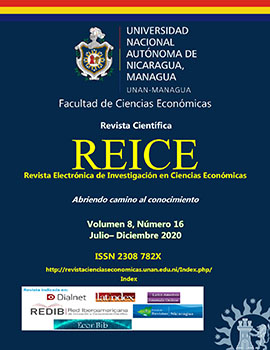Analysis and Modeling of Corruption among Entrepreneurs
DOI:
https://doi.org/10.5377/reice.v8i16.10699Keywords:
Corruption, Social Psychology, Behaviour, Descriptive Norms, John Nash EquilibriumAbstract
Bribery may eradicate social welfare. In the current research, we inspected the mechanism of bribery behaviour based on the (NASH Theory or Non-Cooperative static game theory) which stated by John Forbes Nash Jr. in 1978. With the general hypothesis of “Rational Player,” two bimatrix game models are settled to evaluate the briber and the bribee strategy choice. After discussing the cost-benefit of the (Participants or players), some useful conclusions and dissolve analysis are drawn out. The current study provides three novel experiments that put both metaphors to the test. Overall, a little quantitative study has investigated sequential unethical behaviour. Insomuch prior studies focus on third-party observers’ acceptance of continuous vs. abrupt immoral acts, or the role of self-control and ethical disengagement in the slippery slope of lesser cheating acts empirical investigation contrasting ongoing to the abrupt occurrence of corruption is missing altogether. Recent advances in empirical corruption studies methodology allow the first examination of these different procedures while preserving the economic costs and benefits constant. In the current study, we used a recently improved corruption game by [Köbis, van Prooijen, Righetti, Van Lange, 2015].
Downloads
924
Downloads
Published
How to Cite
Issue
Section
License
Copyright (c) Revista Electronica de Investigacion en Ciencias Economicas
The rights to the articles published in REICE are from the journal, in order to be able to manage their best dissemination. However, since the purpose of the same is the dissemination of knowledge, this journal provides immediate free access to its content, under the principle that making research available to the public free of charge, which fosters a greater exchange of global knowledge.
The opinions expressed by the authors do not necessarily reflect the position of the publisher of the publication or of the UNAN-Managua. Its reproduction and distribution is authorized (in any type of support) provided that the following indications are fulfilled:
- The authorship of the work
- Indicate its origin (REICE magazine, volume, number and electronic address of the document)

